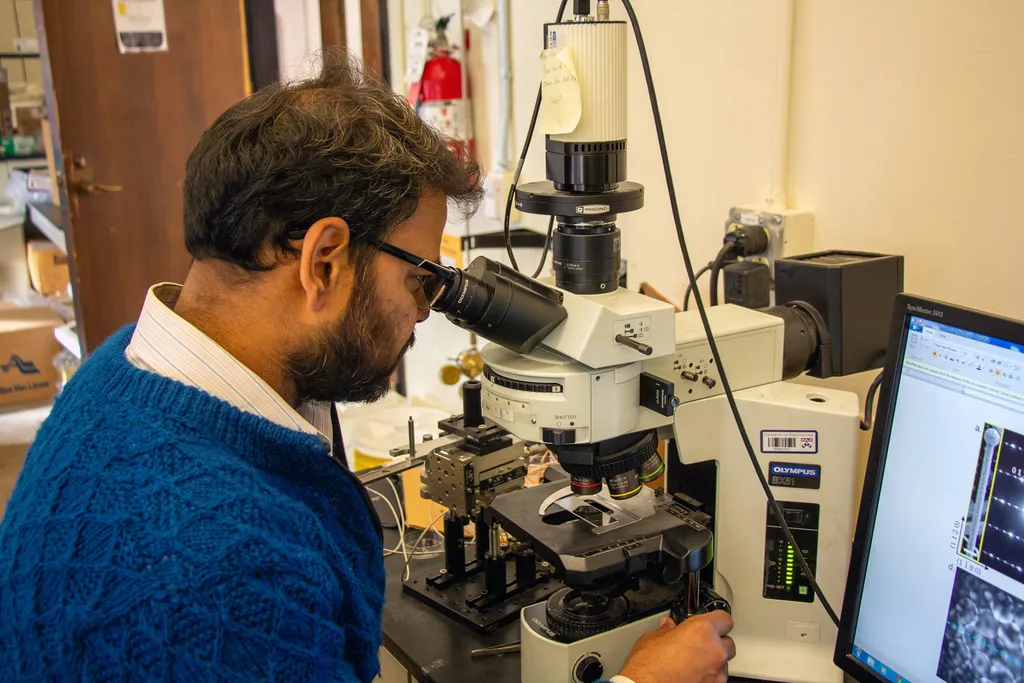In the ever-evolving landscape of data storage technologies, a groundbreaking study has emerged that could reshape how we understand and utilize phase-change materials. Researchers, led by Nicoleta Stan from the Institute of Solid Mechanics at the Romanian Academy, have turned to ultrasonic non-destructive testing (NDT) to uncover the elastic properties of Ge2Sb2Te5 (GST), a material pivotal in data storage applications. This innovative approach not only promises to enhance the precision of material characterization but also opens new avenues for the energy sector.
Phase-change materials like GST are at the heart of modern data storage technologies, capable of switching between amorphous and crystalline states to store data. However, understanding their mechanical properties has been a challenge. Stan and her team have tackled this by employing ultrasonic measurements to determine both longitudinal and transverse velocities, which are crucial for calculating mechanical parameters such as Young’s modulus and Poisson’s ratio. “Our findings confirm the accuracy and reliability of ultrasonic testing in characterizing the elastic behavior of GST,” Stan explained. This method provides a non-invasive way to evaluate these materials, which is a significant advancement in the field.
The study, published in ‘Materials Research Express’ (translated to English as ‘Expressions of Material Research’), also includes X-ray diffraction analysis, revealing well-defined peaks corresponding to the face-centered cubic (fcc) phase of GST. The average crystallite size was estimated using the Scherrer equation, and the elemental composition was quantified through EDX analysis. These detailed insights into the material’s structure and composition are invaluable for developing more efficient and reliable data storage solutions.
The implications of this research extend beyond data storage. In the energy sector, phase-change materials are being explored for applications in thermal energy storage and conversion. Understanding their mechanical properties can lead to more robust and efficient energy storage systems, which are critical for renewable energy integration. “This approach offers a precise, non-invasive method for evaluating phase-change materials, supporting its broader application in materials science and electronic device development,” Stan noted.
As the world moves towards more sustainable and efficient technologies, the ability to accurately characterize and utilize phase-change materials becomes increasingly important. Stan’s research provides a solid foundation for future developments, paving the way for innovations that could transform both the data storage and energy sectors. The study not only highlights the potential of ultrasonic testing but also underscores the importance of interdisciplinary research in driving technological advancements.

